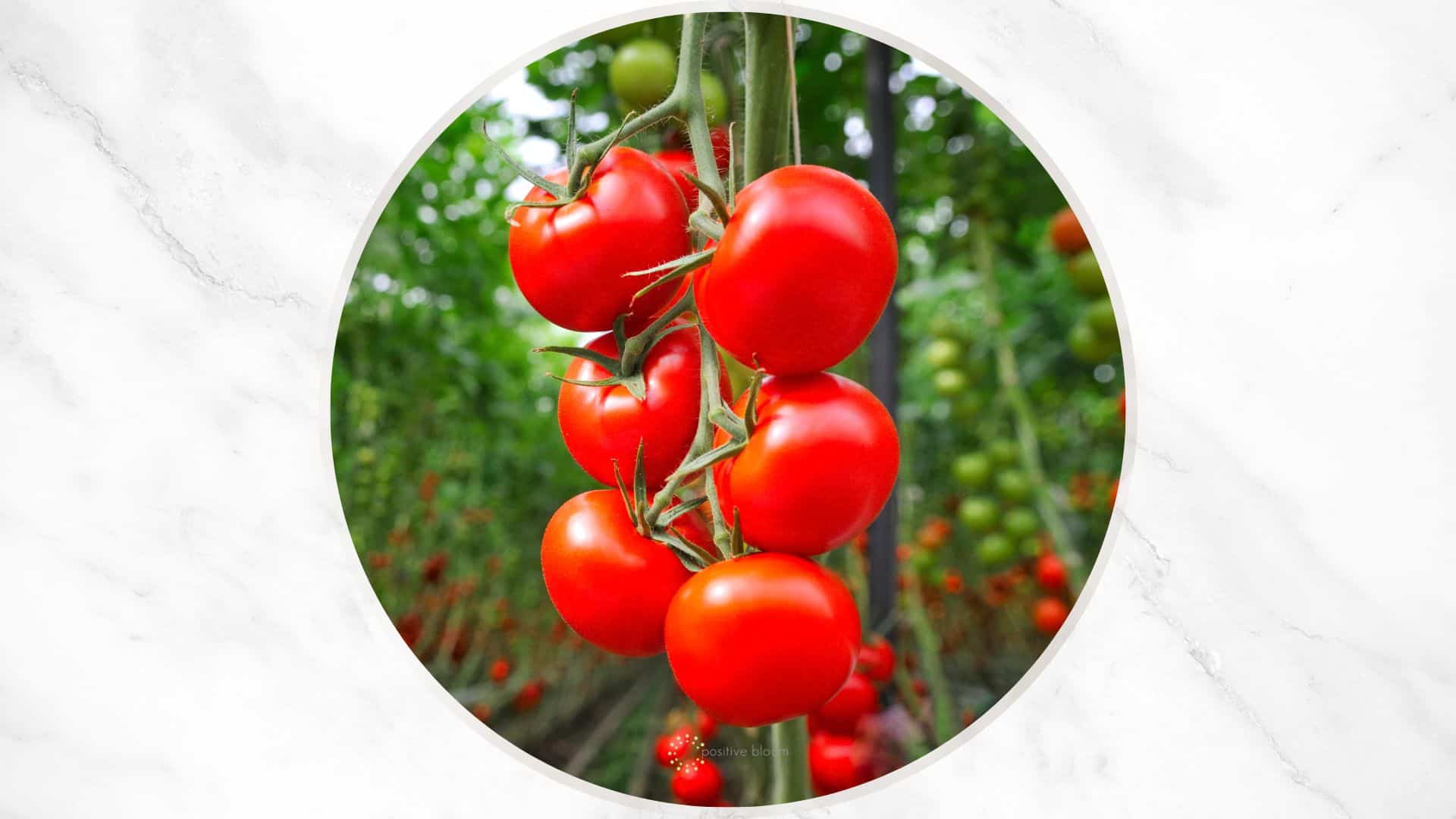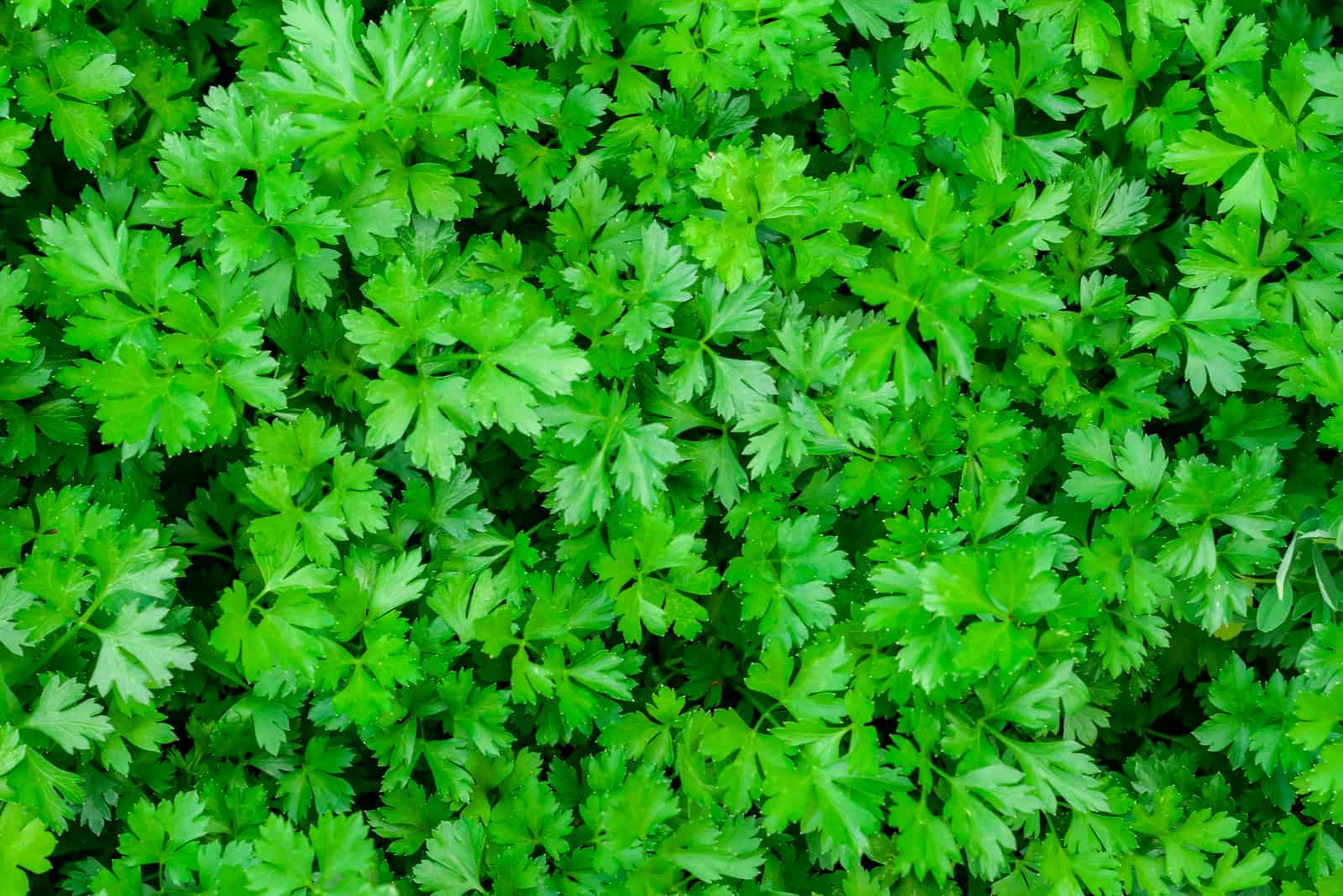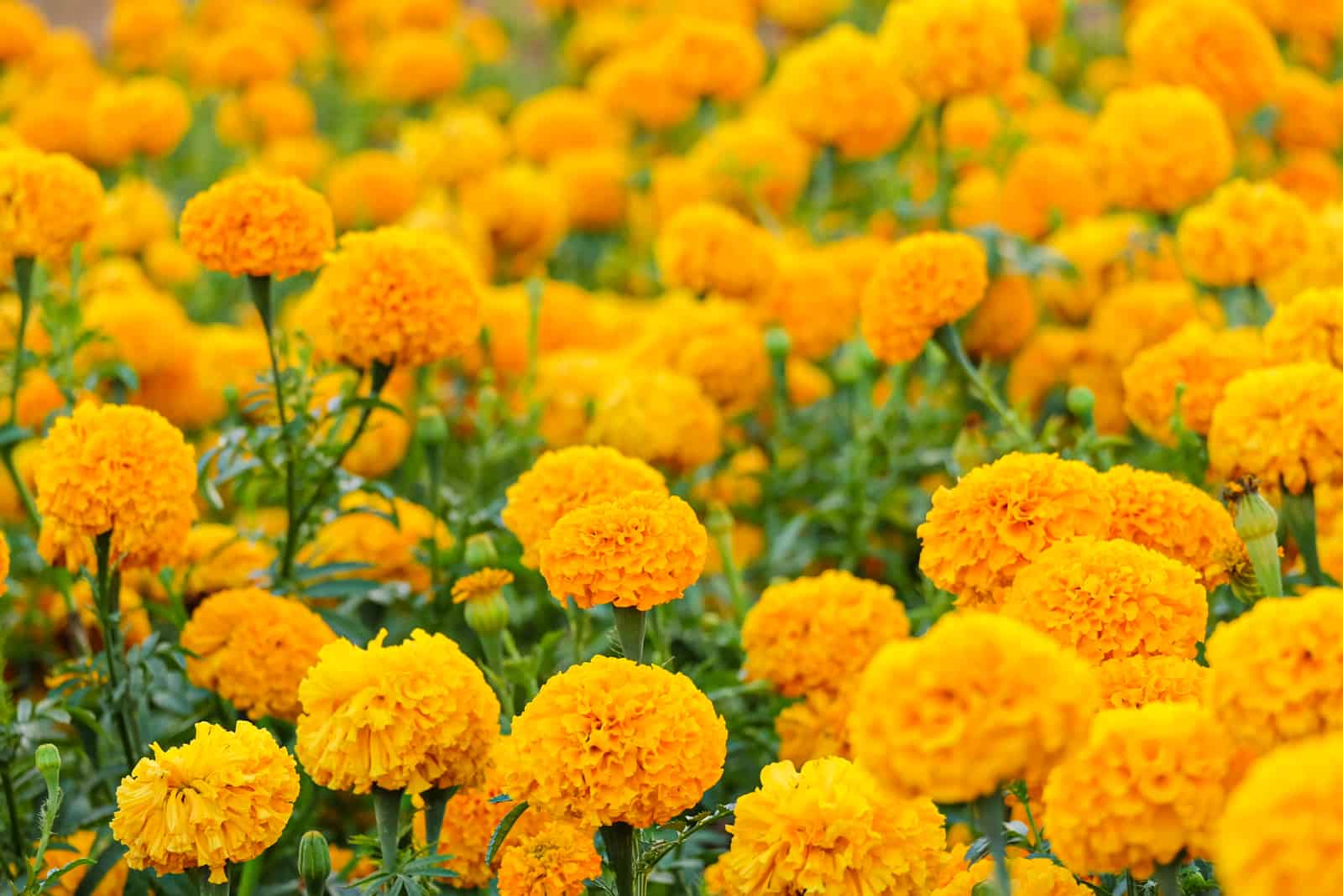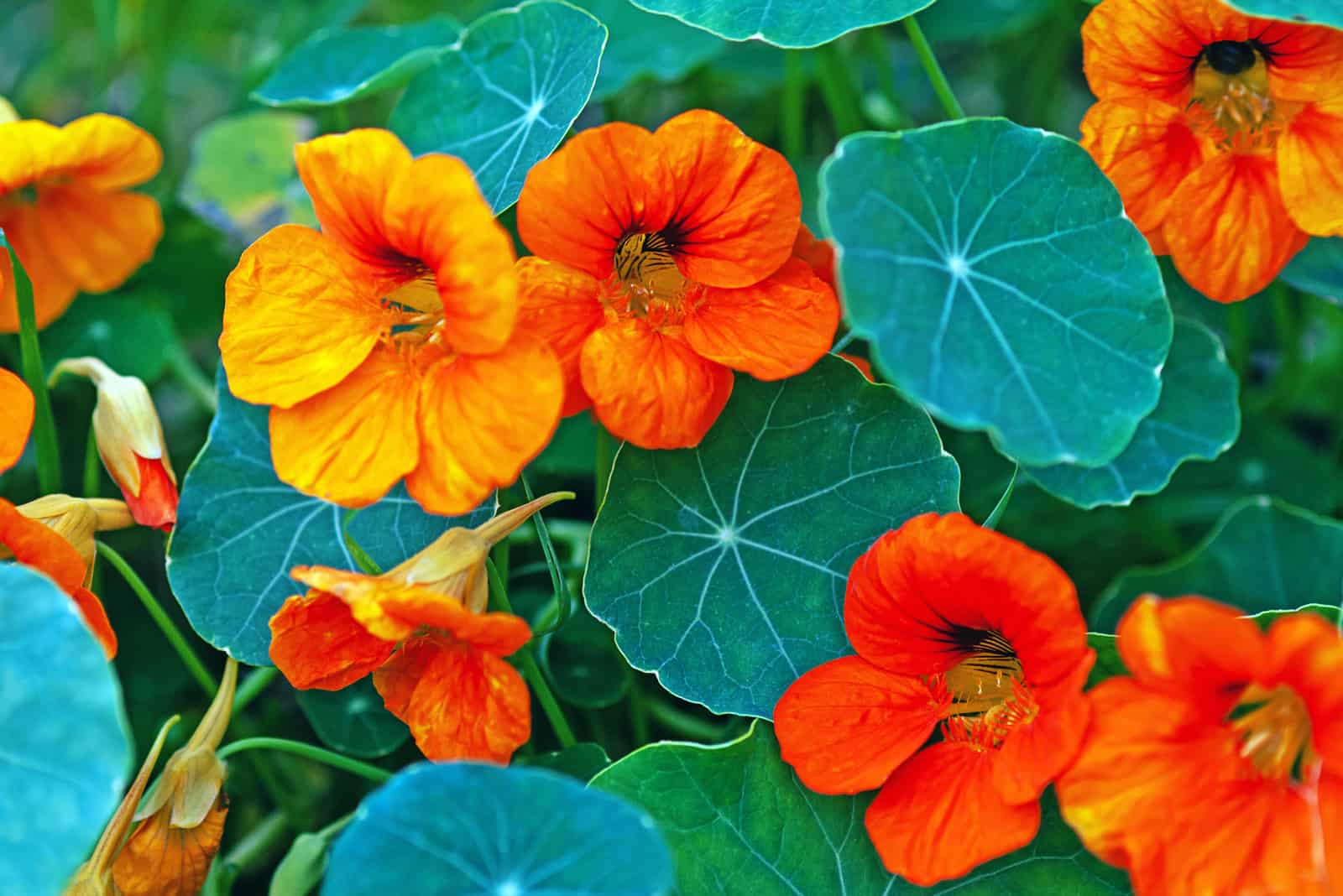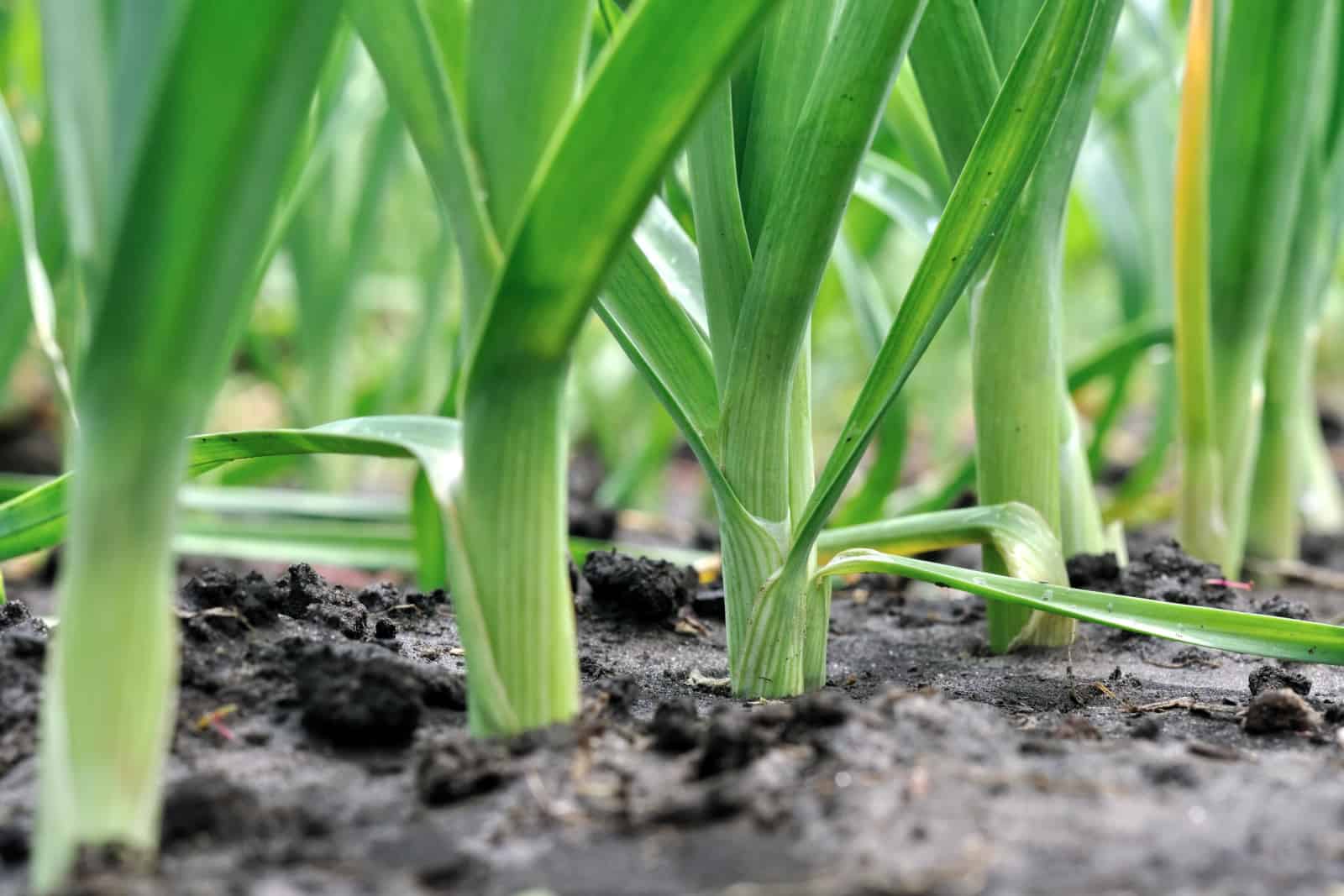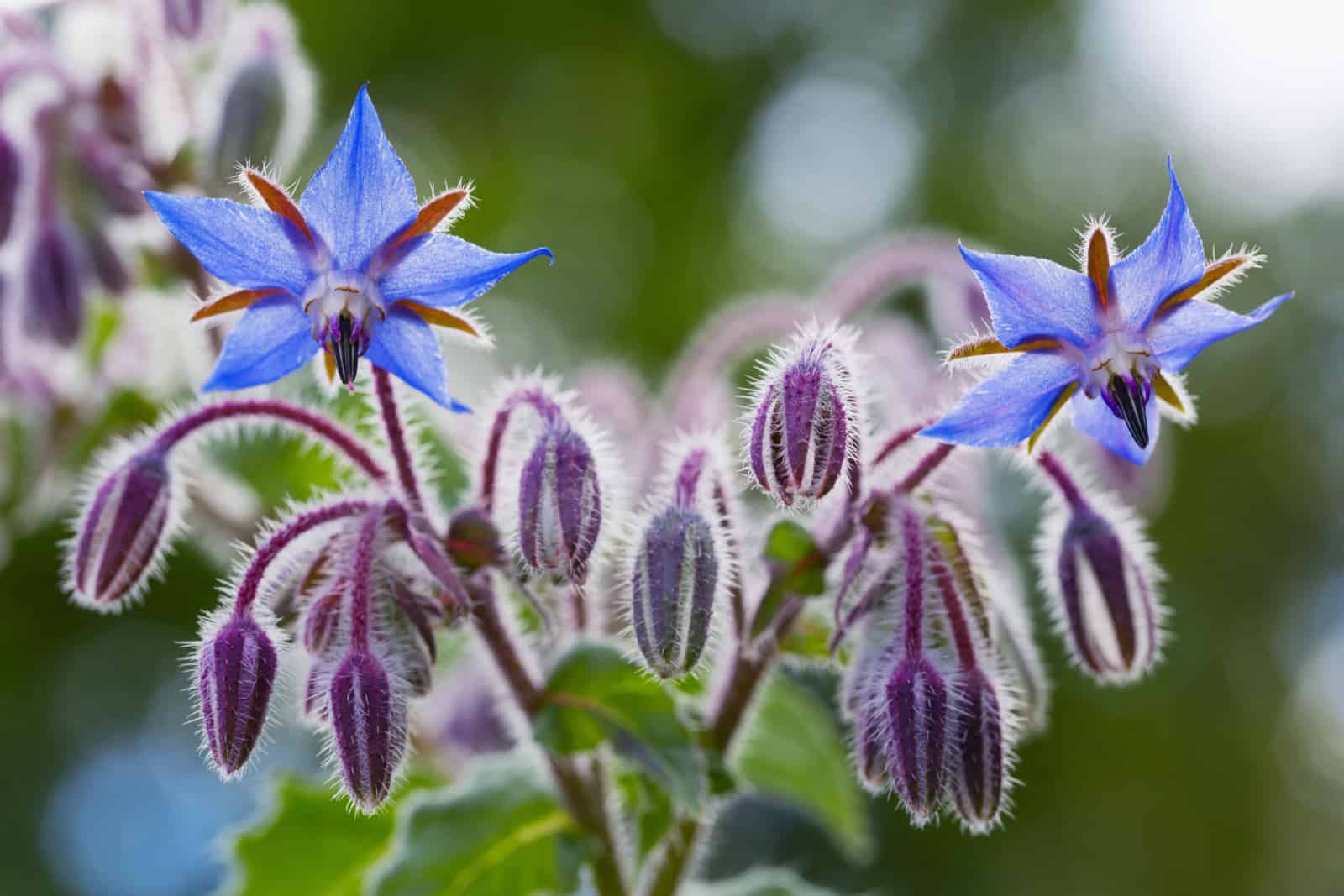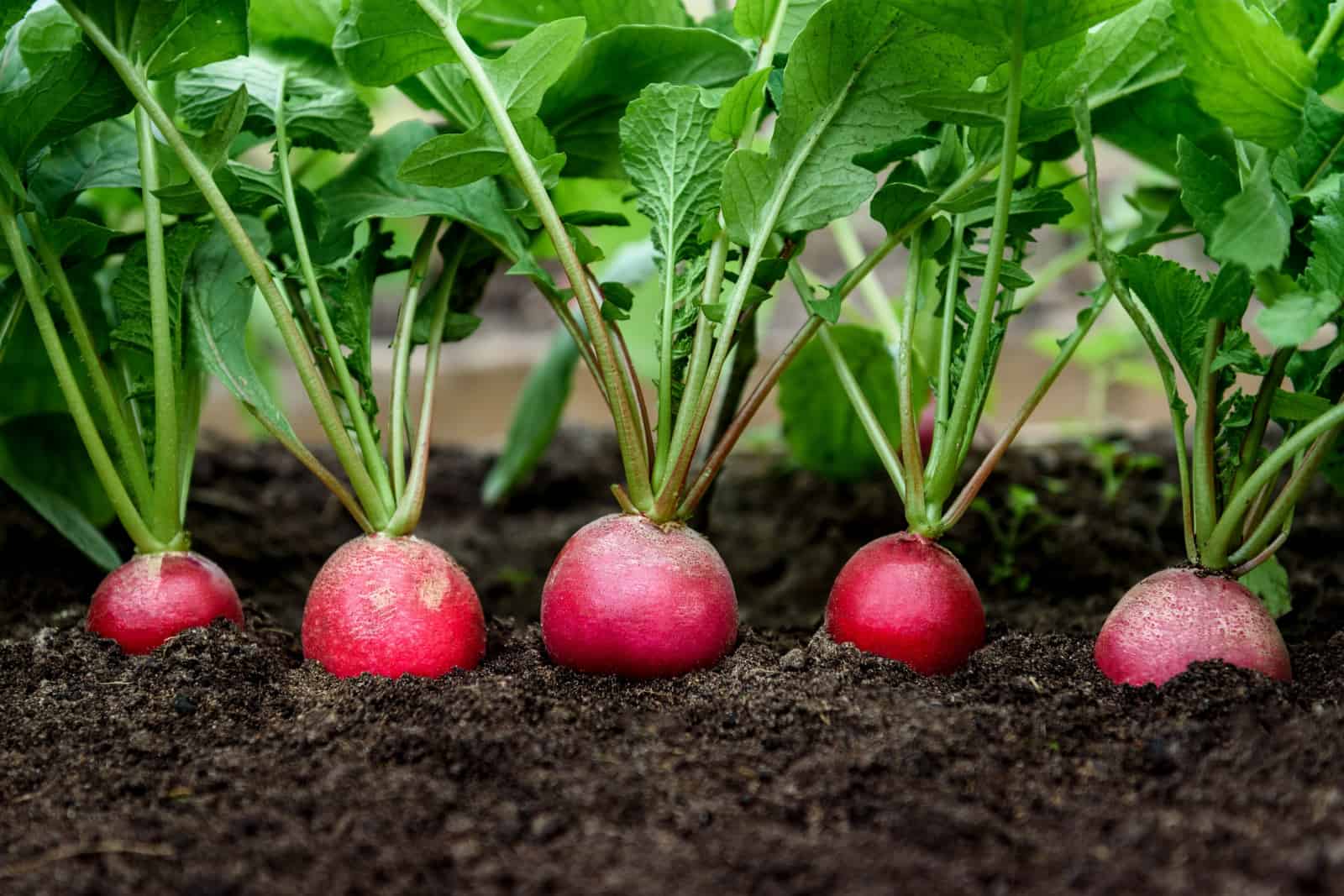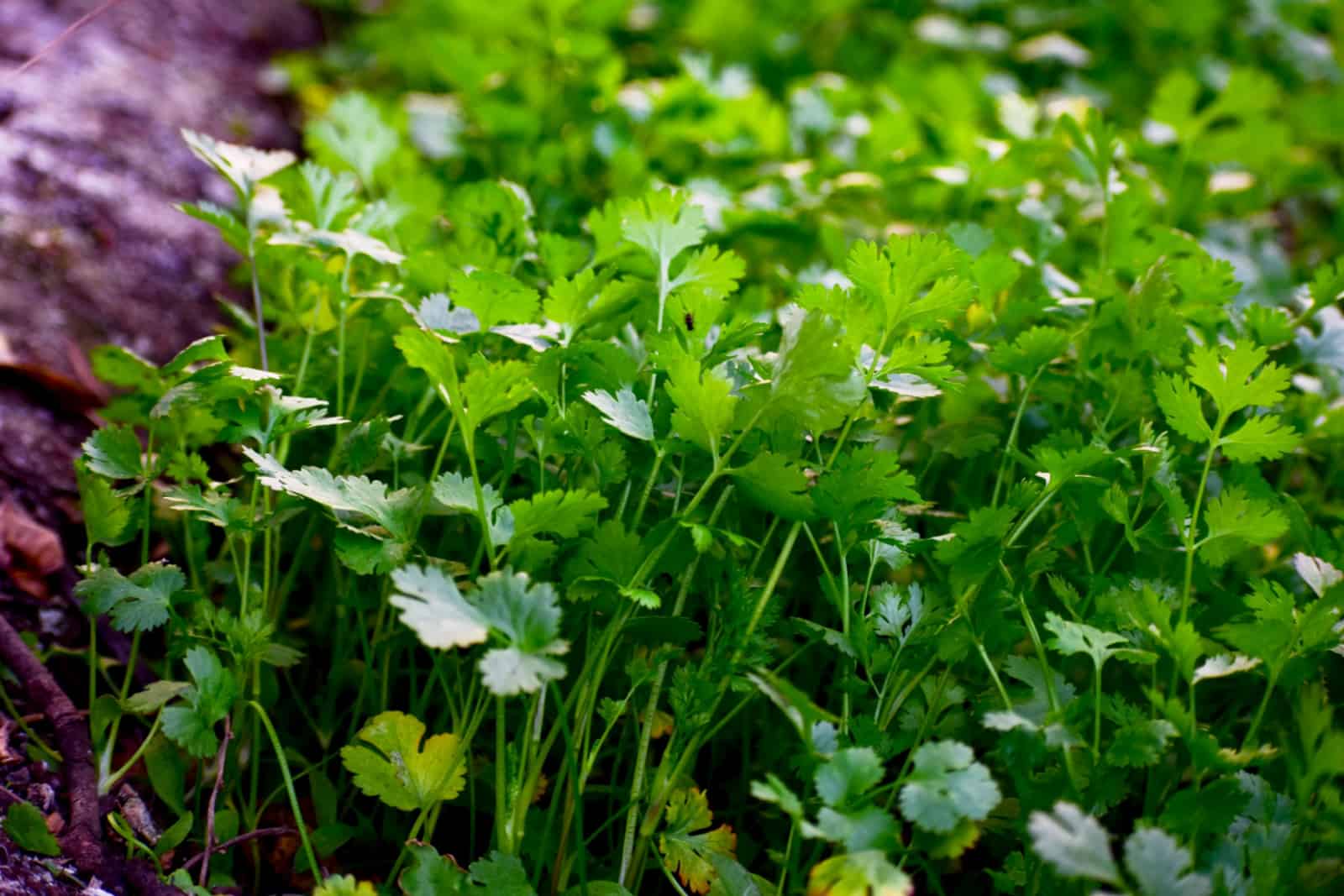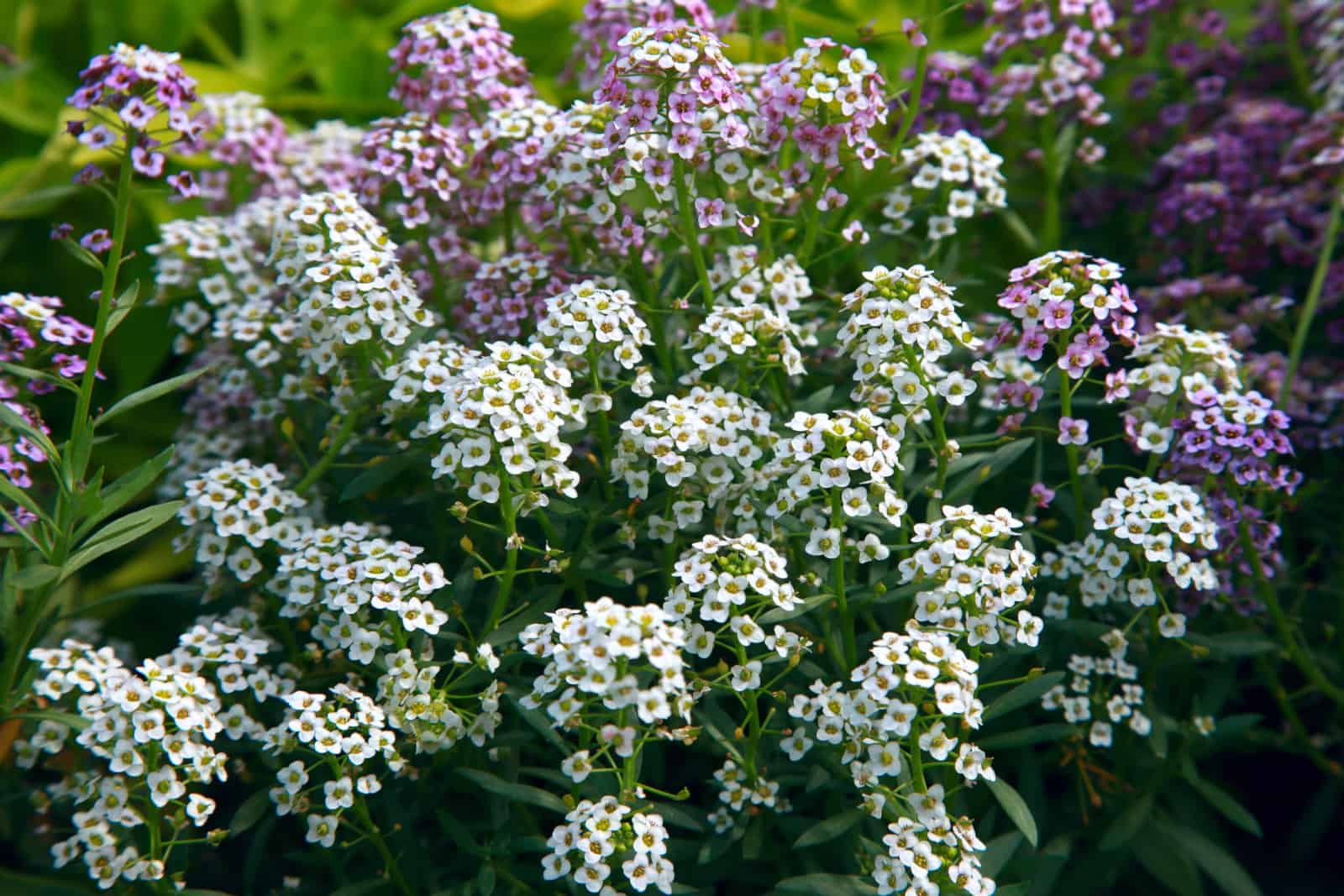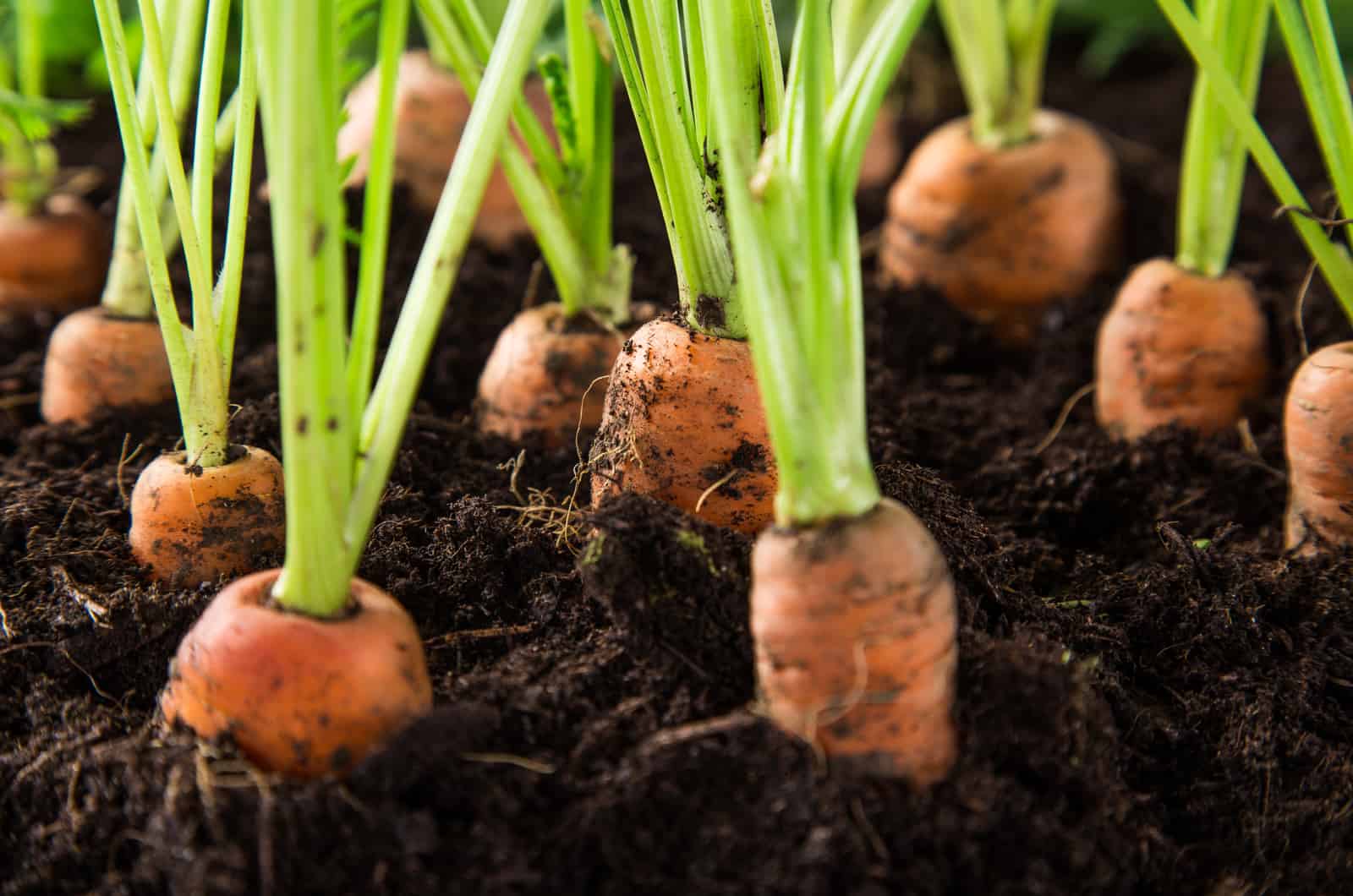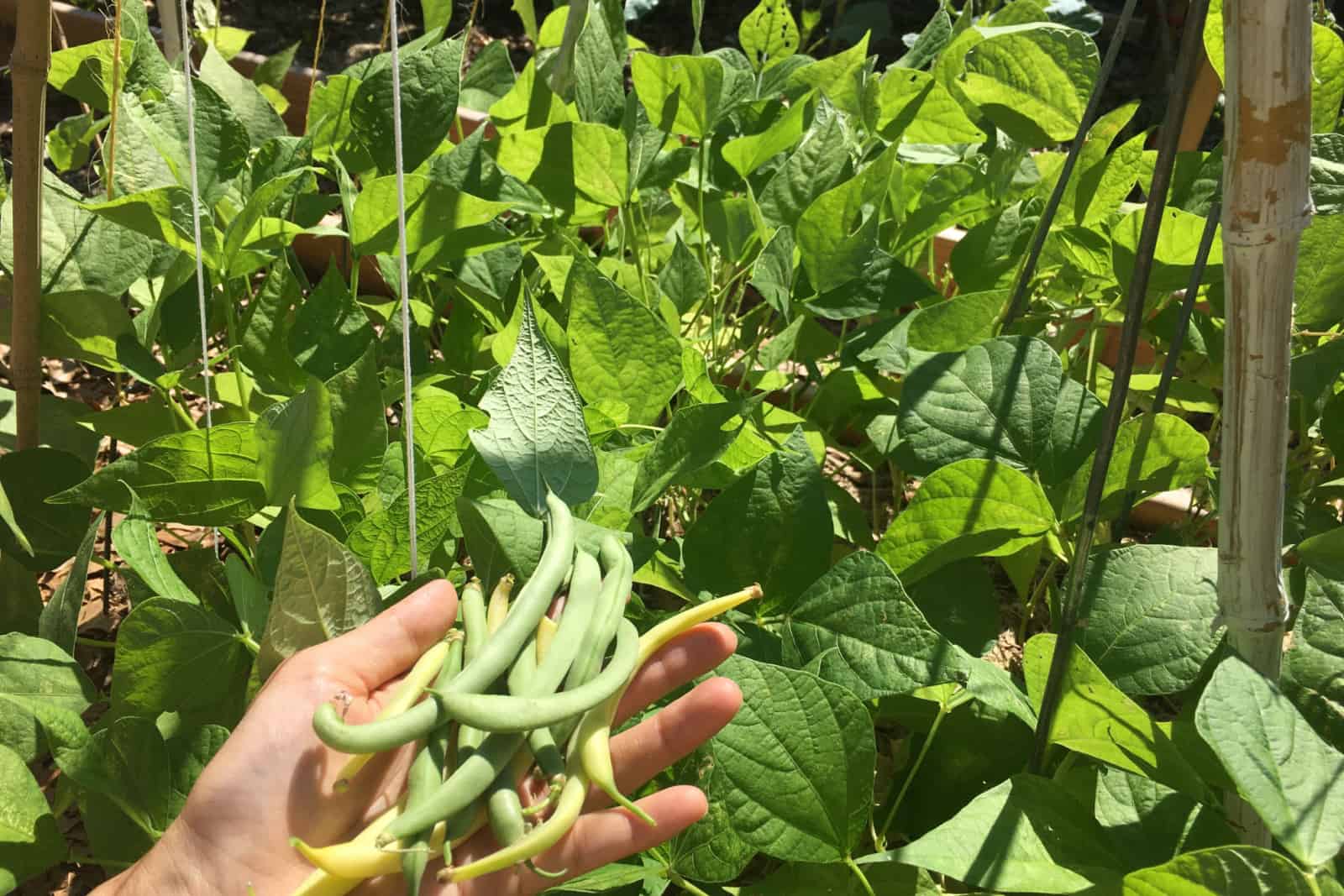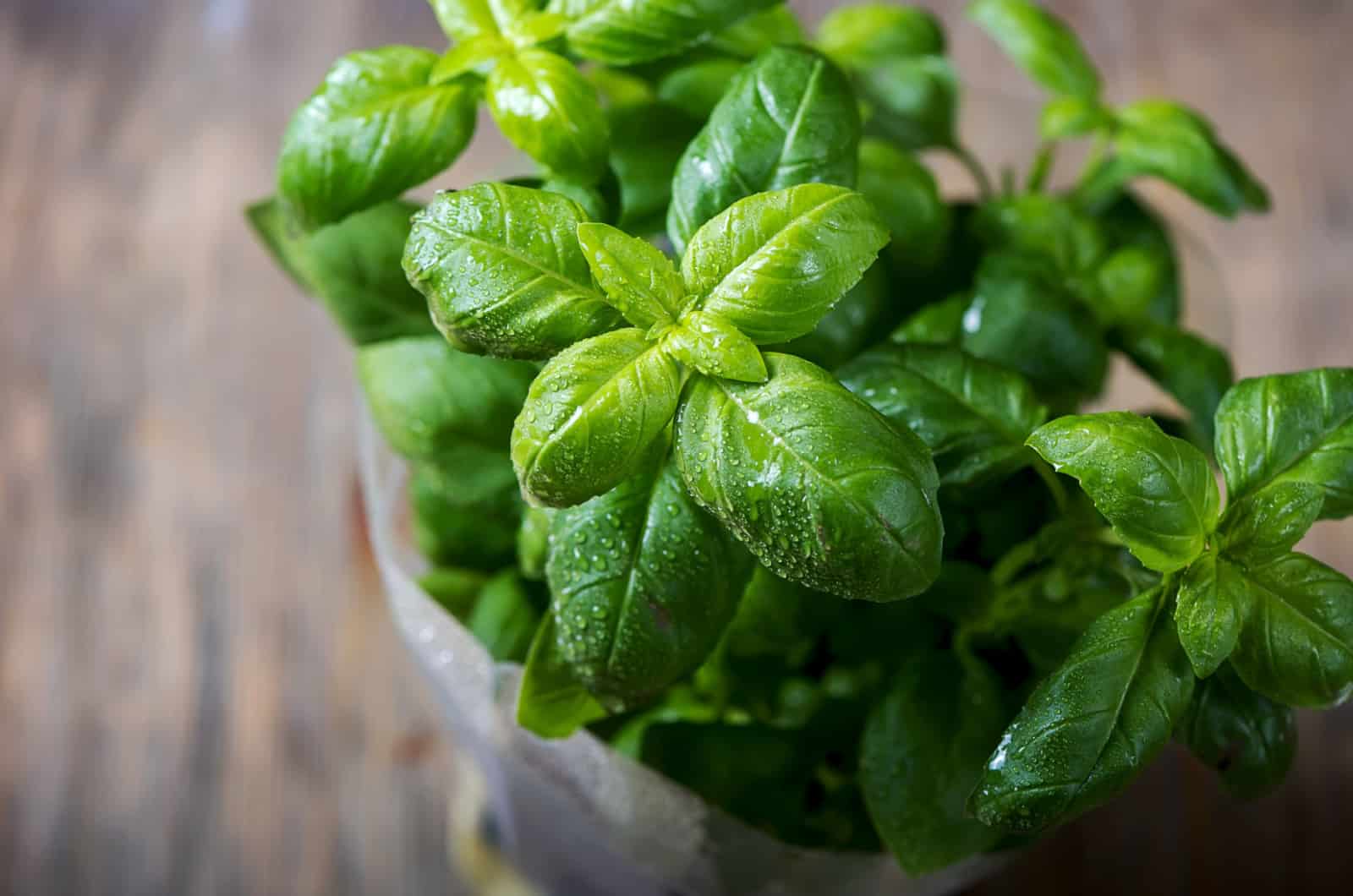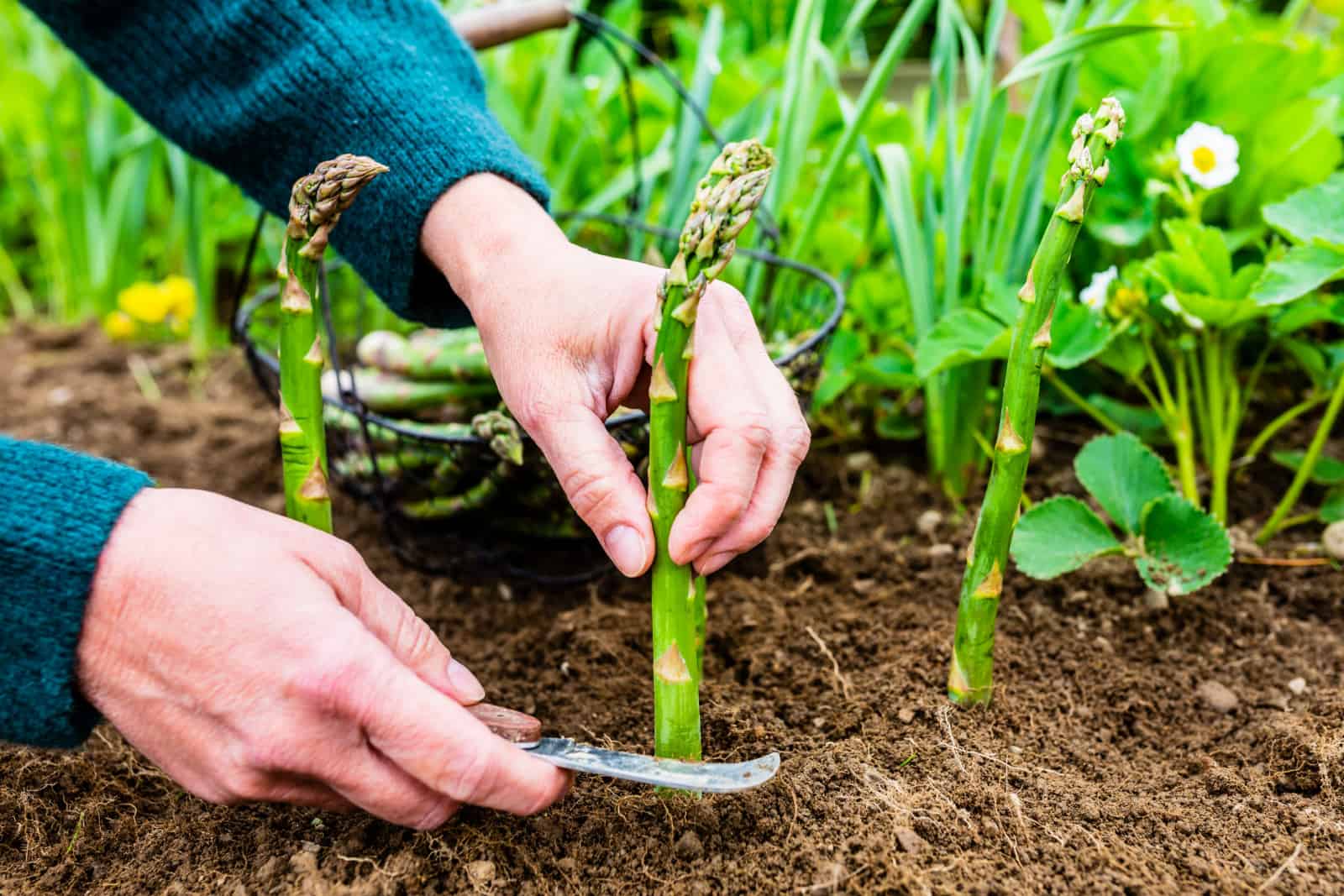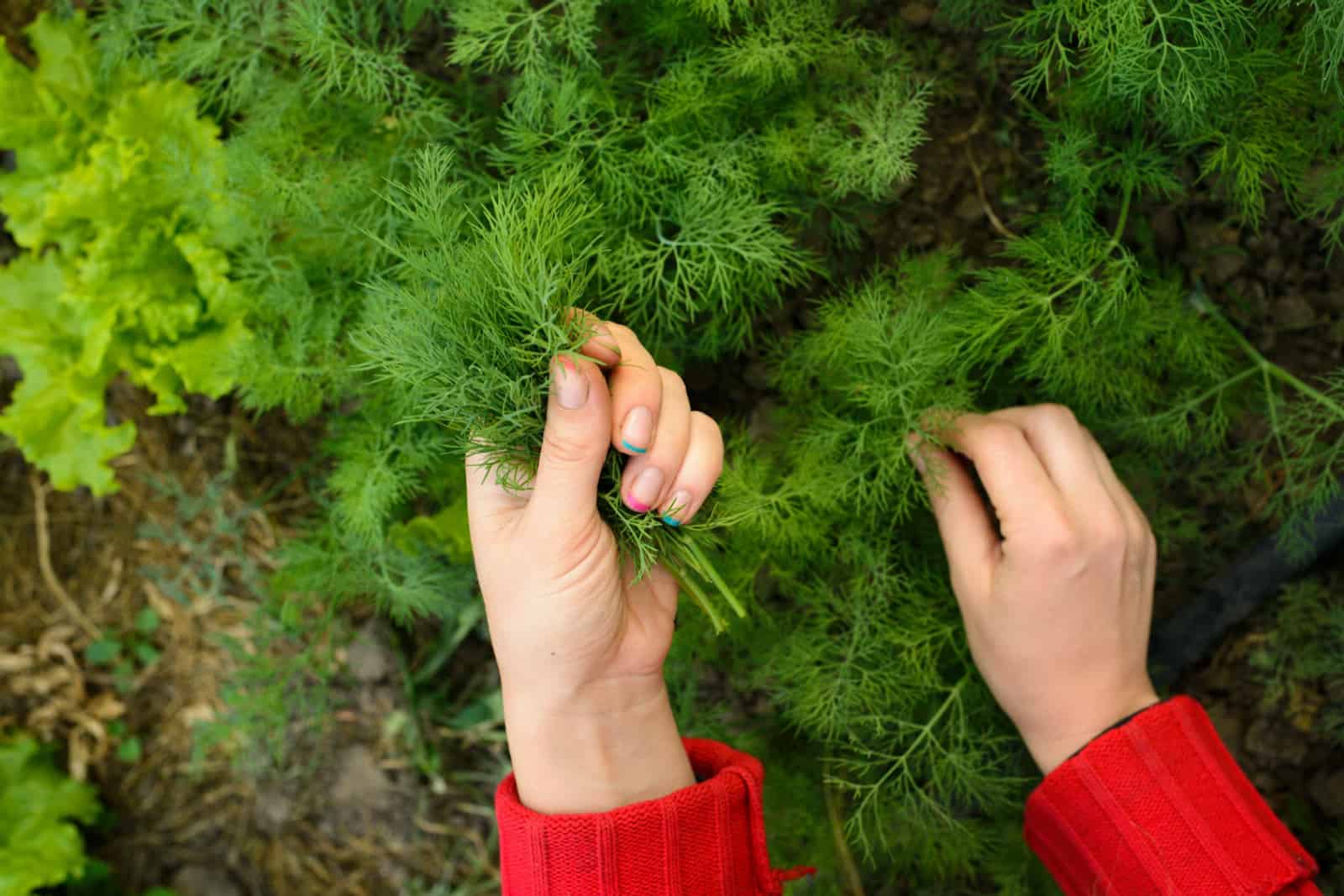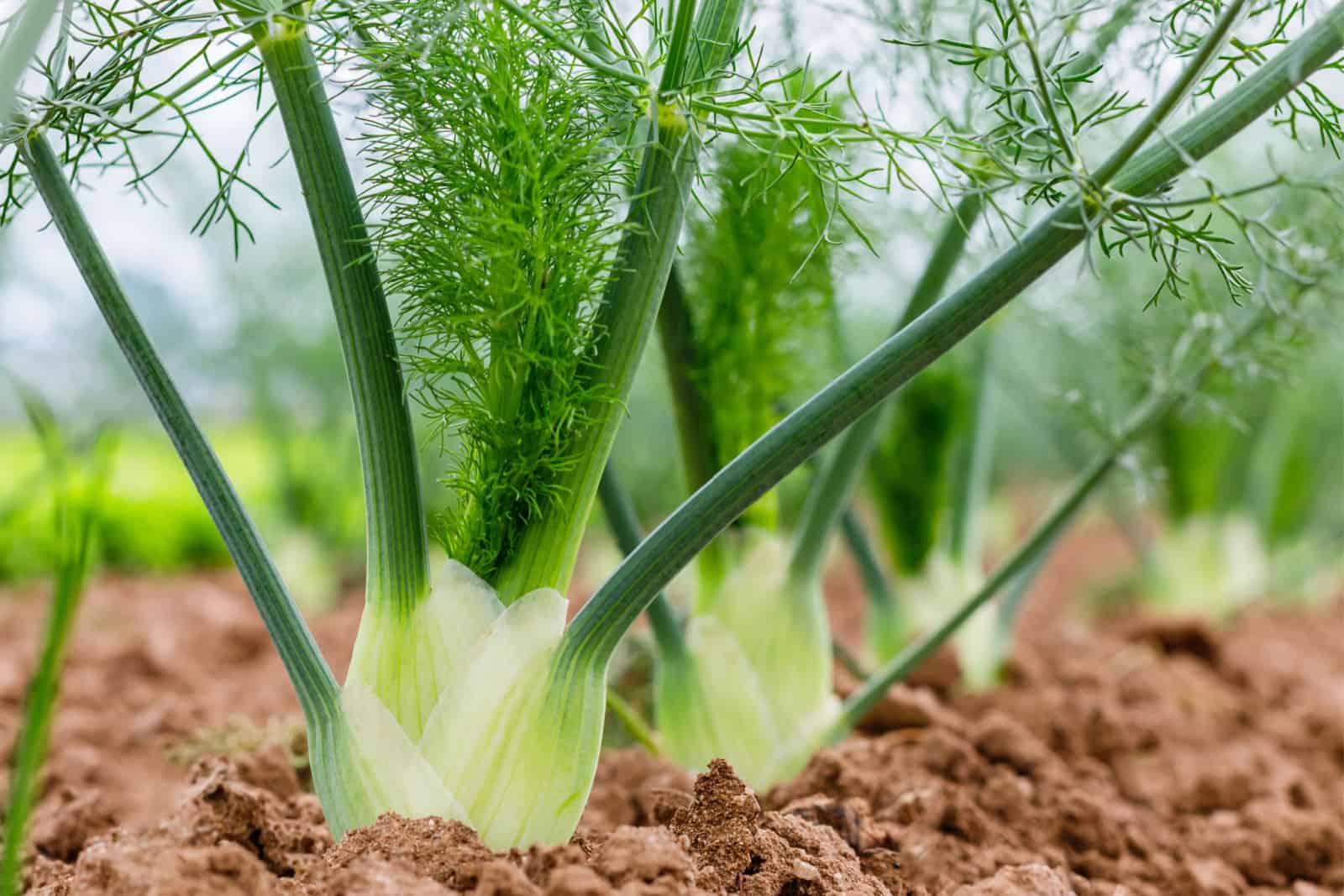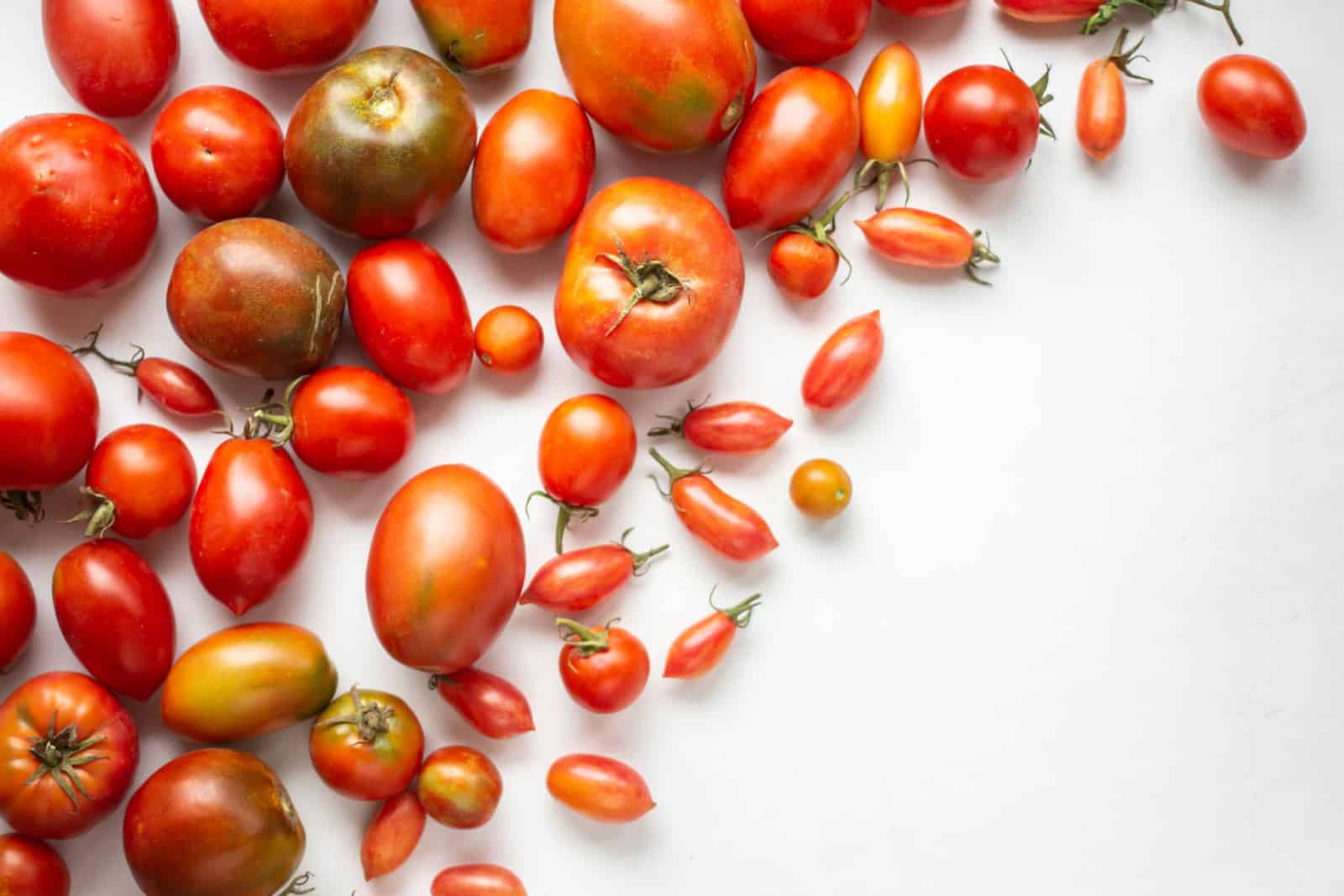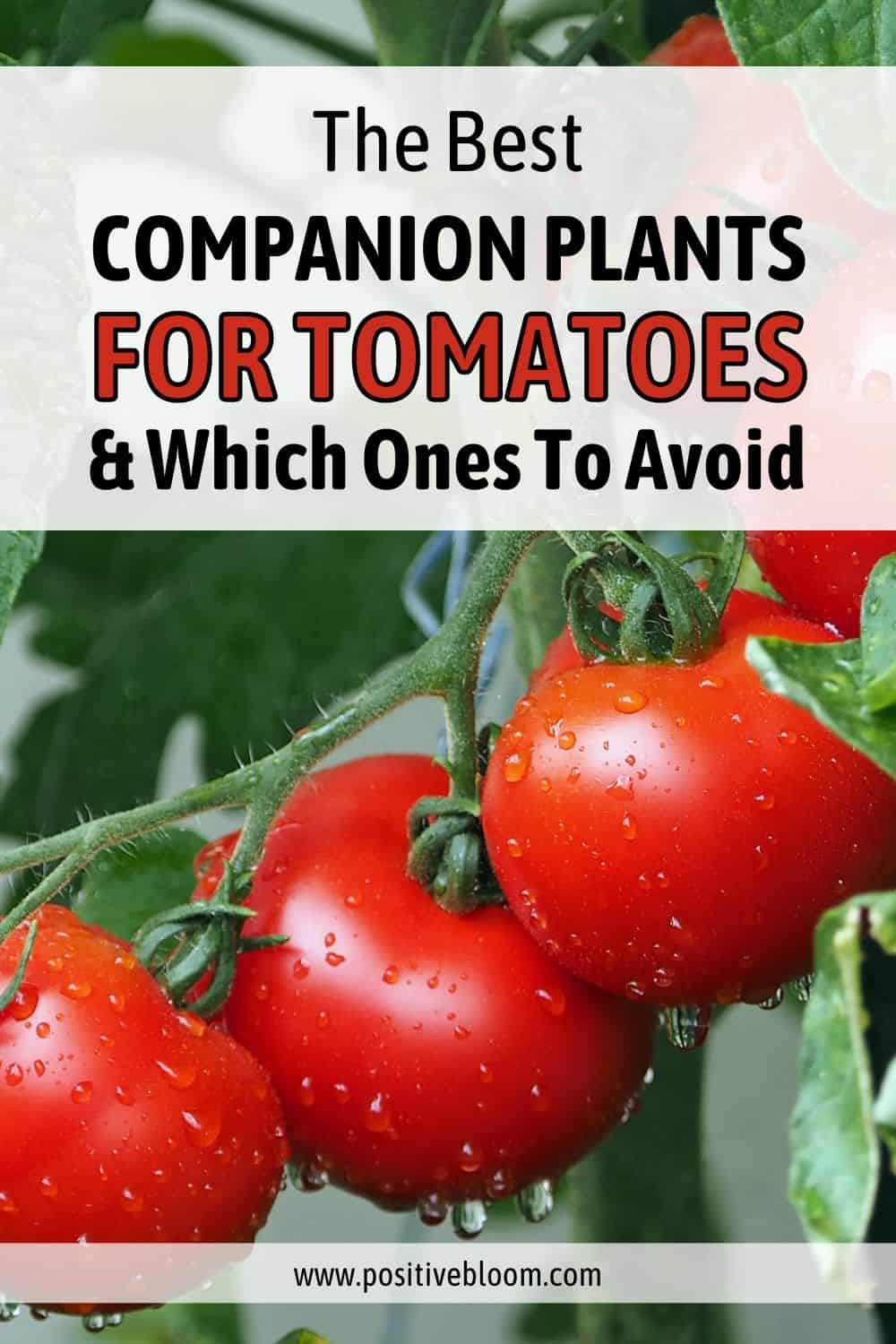Did you know that growing certain plants close to one another can have mutual benefits for both plants, thus ensuring proper growth and better yield? That’s right, companion planting is an old gardening hack that is still being used today.
Although some gardeners say that this practice doesn’t work, I personally believe that it does wonders, especially when it comes to herb companion planting, since they don’t need many nutrients to grow and develop.
Today, we will be talking about companion plants for tomatoes. Everybody loves tomatoes, right? These are my favorite fruits/veggies, call it whatever you want!
So, let’s take a look at what plants might boost tomato growth, as well as some benefits of growing tomatoes nearby.
Companion Plants For Tomatoes: Benefits
First, let’s discuss a little more about companion planting. It basically comes down to planting certain plants close together so that they make each other’s growth and development safer and ensure that crops are produced. Here are some of the benefits of companion planting:
• Keeping insects at bay — certain insects, such as cucumber beetles, cabbage worms, carrot flies, and cabbage moths (the list is endless!), can utterly destroy your vegetable garden. I recently had a particularly bad aphids infestation which utterly destroyed my peppers! However, some plants with distinctive scents have the power to ward off these irritants, acting as a natural pest control measure.
• For shade — some plants have a strong tendency to grow very tall, which casts a shadow over other plants that shouldn’t be kept in direct sunlight. These include zucchini and asparagus.
• Improving taste and growth — beneficial companion plants like chamomile, marjoram, and summer savory release compounds into the soil that promote the growth of neighboring plants and enhance the flavor of their fruit.
• Drawing beneficial insects — in order to produce crops, every flowering fruit or vegetable needs to be pollinated. If you reside in a region with a low pollinator population, you might occasionally need a little assistance to draw in pollinators like ladybugs and bees.
• Using ground covers to keep the soil cool and shield it from the sun. Low-lying plants such as oregano can be used as ground covers.
• Increasing the nutrient content of the soil — plants are accustomed to receiving nutrients from the soil. However, some plants emit particular nutrients and enhance the condition of the soil. Beans are one example of a nitrogen-fixing plant that releases nitrogen into the soil for use by other plants to produce lush foliage.
Are Tomatoes Good Companion Plants?
With their upright growing habit and sun-loving nature, tomatoes definitely make great companion plants. Solanine, a substance that tomatoes produce, is a natural pesticide that can deter a number of pests.
Veggies that like slightly colder temperatures can also get some shade from tomatoes as they mature and thrive, which helps them survive the hot summer days. Some vining plants can even climb up tomato plants!
The Best Tomato Companion Plants
We have already mentioned the benefits of companion planting, so let’s now take a look at some of the best tomato companion plants. However, there are also some plants that you shouldn’t plant next to tomatoes, so stay tuned to find out all about those too!
1. Tomato & Parsley
Parsley is a delicious herb that is often grown in gardens for culinary use. It really does do wonders when added to meals!
Besides making every meal super delicious, parsley also has numerous health benefits. For instance, it can help with controlling blood pressure and reduce bloating. If you want to grow it in your garden, then you should definitely consider planting it near your tomatoes.
Parsley has a unique scent that attracts specific predatory insects of tomato hornworms (these caterpillars can completely ruin your tomato plants). It also attracts beneficial insects like ladybugs that keep hornworms at bay.
It can also improve the flavor of your tomatoes.
Be careful not to plant parsley next to mint or lemon balm, as they tend to get invasive.
2. Tomato & Marigolds
If you want your garden to be filled with beautiful flowers, then you should definitely consider planting marigolds (not to be confused with decorative Calendula, also known as pot marigolds). These lovely plants produce colorful flowers that are able to attract various pollinators and beneficial insects, especially hoverflies and parasitic wasps.
Marigolds also repel pests such as whiteflies, and they are also one of the best snake-repellent plants. They even produce deep and robust roots, which keeps critters like root-knot nematodes, moles, and gophers away from your plants.
This is especially important because nematodes, worm-like microscopic creatures, usually tend to infest tomatoes severely if they are grown in warm sandy soils.
It doesn’t matter if you grow American or French marigolds in your home garden, they both have strong scents that attract good insects and repel bad ones.
3. Tomato & Nasturtium
Similar to Marigolds, Nasturtium is an excellent companion plant, especially for members of the nightshade family. This is because these veggies are prone to insect pests, particularly aphids.
Nasturtium is hardy and gets along with a wide variety of plants, mostly because it produces lovely flowers that attract beneficial insects like hoverflies, which can practically eradicate pests and insects like aphids, cucumber beetles, whiteflies, etc.
We commonly refer to these plants as trap crops because they trap pests and insects, preventing them from attacking surrounding crops.
In addition to this, Nasturtium grows rather quickly after planting, and it spreads around tomatoes to keep the soil moist and ensure that beneficial insects have somewhere to settle.
Lastly, they can make your garden look absolutely dreamy because they also produce magnificent flowers!
4. Tomato & The Allium Family
Leeks, onions, and chives are members of the Allium family. According to gardening experts, tomatoes and alliums make an excellent team!
It’s because their strong scent deters the bothersome pest insects that would otherwise destroy your lovely tomato plant. For instance, garlic can be used to protect both the plant and soil from blight, and also keep spider mites away.
Chives contain sulfur-based oil that prevents pests from attacking the tomato plant, and enriches the soil and improves the flavor of tomatoes at the same time. It can also be used for seasoning as well. Bees are drawn to the spring flowers on chives, which boosts the number of useful insects in your garden.
Regular onions take their sweet time growing, which means that they will still be there in mid-July — proudly standing and protecting your plant. They primarily repel aphids, which are the most common critters found on nightshades.
5. Tomato & Borage
Borage has gained a lot of popularity recently, mostly because it can reduce infestations of leaf-eaters like tomato hornworms and cabbage worms.
A wide range of plants, including squash, tomatoes, strawberries, carrots, and cabbage, can benefit from borage companion planting.
Don’t miss the opportunity to enjoy some delicious tomatoes because this herb, like many herb companion plants, can improve the flavor and growth of these crops.
6. Tomato & Radishes
Radish is a root vegetable that is a very good companion plant. Surprisingly, it is also a great companion to carrots, even though they are both root vegetables!
But what’s in it for the tomatoes?
Well, radishes are also used kind of like sacrifice crops — they distract flea beetles from tomatoes, which prevents them from munching on those tasty tomato leaves!
Flea beetles will eat almost any veggie you can think of, but radishes are their favorite. If there are any radishes nearby, they will invade them instead of another veggie in the garden. In moderate climates, radishes can be planted all year long, and in warmer regions they can be sown in the late summer.
7. Tomato & Cilantro
Cilantro is yet another herb that can be grown next to tomatoes. This is because the blossoms they produce are very good at attracting predators of nematodes, aphids, rust flies, whiteflies, and Lygus bugs. Cilantro acts as a natural pest deterrent!
The most important predator is definitely the parasitic wasp, which completely destroys tomato hornworms. These wasps lay their eggs in tomato hornworms, and once the larval wasps pupate, the tomato hornworms die.
Read also: What Are Tomato Hornworm Eggs And How To Deal With Them?
8. Tomato & Sunflowers
Both tomatoes and sunflowers are sun-loving plants that make a great couple. Beautiful sunflowers attract pollinators like bumble bees that will pollinate tomatoes, ensuring that those juicy tomatoes grow and develop.
Sunflowers are a good windbreak in windy places, which is useful if you’re growing indeterminate tomato varieties. In some cases, vining tomato plants can grow along a sunflower stalk like a trellis.
Sunflowers draw birds that feed on sunflower seeds in the fall. Therefore, some of the pests that attack tomatoes late in the season may be eaten by these birds.
9. Tomato & Cowpeas
Cowpeas, also known as Black-eyed peas, belong to the Legume family, and are one of the best companion plants ever!
One of the reasons is that cowpeas can actually keep stink bugs away from your other plants because they will be attracted to them. As a result, these stink bugs won’t affect the growth of tomatoes, so you will end up with larger batches.
This is significantly important in the Southern US because these stinkers typically invade fruits and veggies.
Stink bugs are good fliers, so I would recommend you plant cowpeas a few feet away from your tomato plants. I would also advise you to plant them several weeks before sowing tomato seeds. If you want to grow healthy cowpeas, regularly check the plant and remove any stink bugs you find. You can use soapy water for this.
10. Tomato & Pumpkins
Pumpkins and tomatoes are very good pals. Pumpkins are low-growing veggies that like to stay in the shade, which is why growing them next to tall tomatoes is a good solution. The three sisters’ method can be used with them because the pumpkin climbs the trellis like a vine.
As they are low-growing, pumpkins serve as a living mulch to keep the soil cool and aid with water retention.
Read also: 19 Best Pumpkin Companion Plants & Some Plants To Avoid
11. Tomato & Sweet Alyssum
Sweet Alyssum produces tiny white flowers that smell absolutely amazing — their fragrance reminds me of honey. These sweeties are usually grown in clusters and they produce plenty of sweet-smelling flowers.
And you know who likes sweet-smelling flowers?
Beneficial insects such as syrphid flies and parasitic wasps, which act as predatory insects and help manage pest insects, especially aphids.
Sweet Alyssums are also relatively easy to grow, and they won’t interfere with other plant growth.
12. Tomato & Carrots
Tomatoes and carrots go well together for a number of reasons. To start with, tomatoes create a substance called solanine that acts as a natural pesticide and pest deterrent.
You should be aware that tomatoes prefer to grow in the middle of raised garden beds, while carrots prefer to grow on the edges. The carrots, which like slightly colder temperatures, can get some shade from the tomatoes as they mature and thrive, which helps them survive the hot summer days.
Parasitic wasps can also be drawn to carrots, which is why carrots are such good companions to tomatoes. These parasitic wasps will destroy tomato hornworms and caterpillars, which would otherwise damage your delicious tomatoes.
13. Tomato & Bush Beans
My friend George absolutely loves bush beans, which is why we often call him George bush beans! 😀
He told me all about companion planting with bush beans, or as he likes to call it, interplanting with beans. These veggies help tomato plants in an unusual way. They are short plants that are able to improve air circulation around tomatoes and reduce fungal diseases.
Planting tall tomato plants with shorter bush beans creates greater space between the plants. It has been proven to minimize disease prevalence when compared to tomato plants placed close together, as fungal disease spores flourish in moist, humid conditions.
Pole beans would also do the trick if you have enough space.
14. Tomato & Basil
As you are probably already aware, the Basil plant has a strong scent, which is why it is an excellent companion to numerous plants. It can distract plenty of pests and insects that would otherwise attack your tomato plant, including pests like thrips (causes of Tomato Spotted Wilt), aphids, armyworms, moths, and spider mites.
Moths, for instance, lay hornworm eggs that would eventually turn into mature Tomato hornworms which completely ruin plants.
In fact, basil plants camouflage the scent, which confuses the pests of their whereabouts and what plant they should invade.
Basil also improves the flavor of tomatoes and encourages plant growth.
Read also: 21 Best Basil Companion Plants & Some Plants To Avoid
15. Tomato & Asparagus
Growing asparagus and tomatoes together benefits both plants. Asparagus is relatively easy to grow, and it is usually harvested before most other plants in the garden.
Asparagus is helpful for deterring nematodes that occasionally invade the roots of tomato plants. In addition, tomatoes are helpful for deterring the asparagus beetles that often attack asparagus plants.
Therefore, it is a win-win situation!
16. Tomato & Dill
Growing tomato and dill plants next to one another has been a hot topic of discussion. These two don’t make ideal companion plants like the above mentioned plants do.
The fact is that some herbs can keep tomato hornworms and lacewings away, but dill might prevent tomatoes from fully developing.
I advise plucking the tomatoes before the dill covers the ground if you choose to plant these two together. Your tomatoes won’t be harmed by young dill.
Read also: List Of Dill Companion Plants & Plants You Should Avoid
17. Tomato & Cover Crops
Cover crops are usually grown to prevent weed growth and serve as living mulch. Some cover crops that are commonly grown with tomato plants include oats, winter rye, cucumbers, and crimson clover.
Let’s start with the benefits of growing oats next to tomatoes. By preserving the soil during the winter and early spring, and generating an impenetrable mat, oats planted in the fall assist in weed control. In addition, the decomposition of the debris enriches the soil with organic matter. They are also beginner-friendly, so you don’t have to worry about any special plant care.
Winter rye is special due to the allelochemicals found within it. According to a study, allelochemicals impede the germination of weed seeds, but they don’t affect the transplantation of tomatoes, peppers, eggplants, and other vegetables that are grown nearby. To get the most out of rye, you should plant it in the fall and grow it as a winter crop.
Similarly to winter rye, cucumbers also contain allelochemicals that inhibit growth. When planted as a dense groundcover of living mulch around taller crops such as tomatoes, cucumbers can be employed as a weed-management tool. They also prevent weed seeds from germinating by shading the seeds. If you’re starting with transplants rather than seeds, they make excellent tomato companion plants. Avoid using them if you’re starting your companion plant from seeds.
Lastly, we have crimson clover, which is a plant that primarily serves as a living mulch for tomatoes. Plant it between tomato plants or tomato rows, and allow it to flourish all season. Since it is a legume, it will not only outcompete weeds but also fix nitrogen in the soil, supplying it to neighboring plants. Red clover seeds should be sown in the spring or fall to create a living mulch around tomatoes.
Plants To Avoid Growing With Tomatoes
Even though tomato plants go well with so many other veggies and herbs, there are still some plants that you should avoid growing with tomatoes. If your garden is quite small, you will have to strategically plant certain veggies so that they don’t harm nearby plants.
You can also consider growing some veggies in containers and putting them on your balcony or in the yard.
Now, let’s look at some plants that don’t get along very well with tomatoes:
• Fennel — this plant is a relative of carrots, yet it doesn’t offer the same companionship benefits as its relative. Fennel releases a substance that inhibits the growth and development of tomato plants. This also affects other plants around it. Still, some gardeners plant it to prevent aphid infestations.
• Eggplants — tomatoes are members of the nightshade family, along with eggplants, peppers, and potatoes. These plants are susceptible to early and late blight, which can build up in the soil and cause irreversible damage to your plants. In addition, tomato hornworms also like munching on the leaves of other members. Growing tomatoes near potatoes make them more susceptible to potato blight.
• Brassicas — members of the Brassicas family, including Brussels sprouts, kohlrabi, cabbage, collards, cauliflower, kale, and broccoli, are all heavy feeders. They will compete with tomatoes for nutrients and impede the growth of tomato plants.
• Sweet corn — corn plants are susceptible to corn earworms, which are very similar to tomato fruit worms. Therefore, both critters would eat these plants. Growing them in close proximity makes them more susceptible to these pests.
• Walnuts — growing tomatoes below butternut or walnut trees is not recommended since these trees release the allelopathic toxin juglone, which stunts the growth of tomatoes (and all the members of the nightshade family). Walnut wilt disease can affect tomatoes as well, preventing them from fully developing and producing juicy crops.
Frequently Asked Questions
1. What are the benefits of planting tomatoes with other plants?
Tomatoes are a great companion plant. First of all, it is a sun-loving plant that grows tall, which means that it can provide shade for lower plants that don’t like being exposed to direct sun. Tomatoes can also help with keeping numerous pest insects at bay, including asparagus beetles and carrot flies.
It can also serve as a support for some vining plants.
2. What is the purpose of companion plants for tomatoes?
The purpose of companion plants for tomatoes is to protect your tomato plant from various pests and insects, and also ensure that your tomato plants produce fully ripe, tasty, and juicy tomatoes.
Certain companion plants also attract beneficial insects and pollinators that are needed for pollination and eventually production of fruits, while other companions serve as trap crops that keep the pests from invading nearby tomato plants.
3. What is best to plant next to tomatoes?
The best companion plants that you can plant next to tomatoes include parsley, basil, carrots, cowpeas, cilantro, alliums, sunflower, borage, radishes, and cover crops like winter rye and oats. The plants that you should avoid include fennel, the Nightshade family, Brassicas, walnuts, and sweet corn.
To Sum Up
Growing tomatoes is relatively easy. All you have to do is keep them nice and warm, give them some water, prune them, and add mulch to help with water retention and control weed growth. However, growing companion plants for tomatoes is also a great idea if you want to enjoy some delicious and juicy tomatoes!
Check out the plants we mentioned that can be grown with tomatoes, and pick and choose the ones that suit your garden the best. I personally switch between alliums and cover crops to prevent pests and weeds, but also add some herbs to improve the flavor of tomatoes.
Be careful not to grow them together with plants that should be avoided, especially the members of the Nightshade family.
That’s all, folks. Use these companion plants as natural pest control and save yourself some money!
I hope this article was helpful. 🙂
Like this post? Share or pin it for later!

